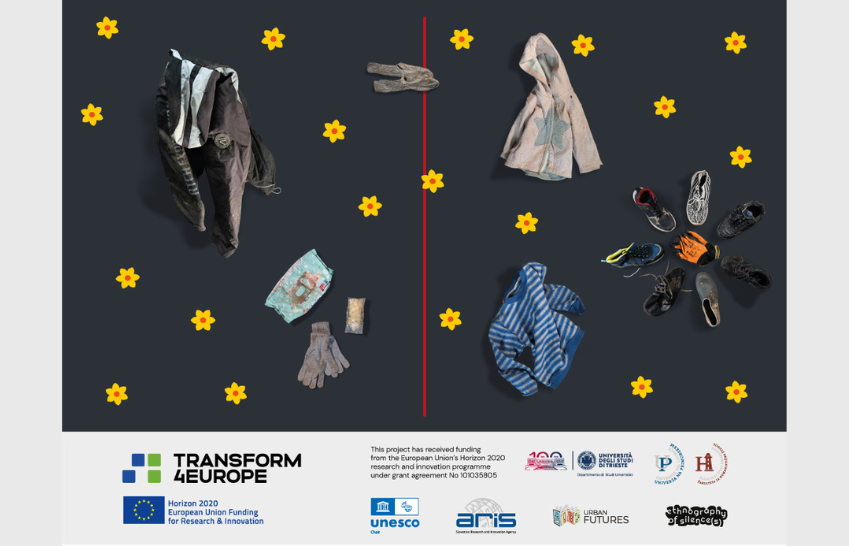The travelling exhibition ‘The Garden of the (In)visible’ travelling exhibition is coming to Trieste after stops in Koper and Herpelje.
It will be open from 20th to 26th May from 6 p.m. at the Rogers Station, Riva Grumula 14 – Trieste and from 27th May to 9th June at the University of Trieste, Central Building, Ground Floor right wing.
During the stay in our University there will be various moments and appointments to explore the issues of borders and migration.
Monday 20th May, 6.00 pm: Inauguration. The exhibition will be presented by Department of Humanities Studies and T4EU members and students. Music by Ismail Swati and Aftab Ali
Tuesday 21st May, 5.00 pm: Khandwala and dignity. Presentation of issues relating to the Silos of Trieste and the living conditions in it. With the participation of the Silos volunteers and those who live there
Thursday, 23rd May, 5.30 pm: The Documentary “Agàpe” by Velania A. Mesay e Tomi Mellina Bares. Aula B. In collaboration with Associazione Casa del Cinema di Trieste. Following the projection, at 19:00 in Stazione Rogers, there will be a talk with the two directors of the documentary, open also to the audience to participate.
Friday, 24th May, 12.00 am: Library of the border (event for secondary schools)
The exhibition is part of anthropological research on the theme of migration carried out by the University of Primorska Koper and the University of Trieste, as part of the activities of T4EU – Transform4EuropeAlliance. Working collaboratively across borders, lecturers and students travelled between Croatia, Slovenia and Italy where they found and collected objects left by migrants in the woods or at the edges of towns.
Friday, 24th May, 6.00 pm: Migration: past, present and future. We will explore the different ways in which migration has influenced over time the social and cultural dynamics of Trieste. With the participation of prof. Roberta Altin and Katja Horbat Virloget – Liliana Vocci e Silvia Cassano (testimonies of the exodus) and the University delle Liberetà.
These things are abandoned after long and difficult journeys on foot by people from various backgrounds in Asia and Africa.
They are both everyday objects used for eating, sleeping, protecting oneself from the elements and caring for oneself as well as artefacts that reveal an intimate and spiritual sphere.
Casting these things aside and abandoning them leaves a record of a passage towards a new stage in life, a sign of rebirth.
The piles of discarded things at the edge of the woods or by the roadside that we ignore or treat as rubbish lead us towards a fundamental political and moral question of our times.
Only a small number of these objects have been selected for inclusion in the exhibition ‘In the garden of the (In)visible’.
The travelling exhibition attempts to stage encounters between individuals crossing borders and individuals living at borders.
Ultimately, it seeks to ask a fundamental question: what do we (not) want to see?

